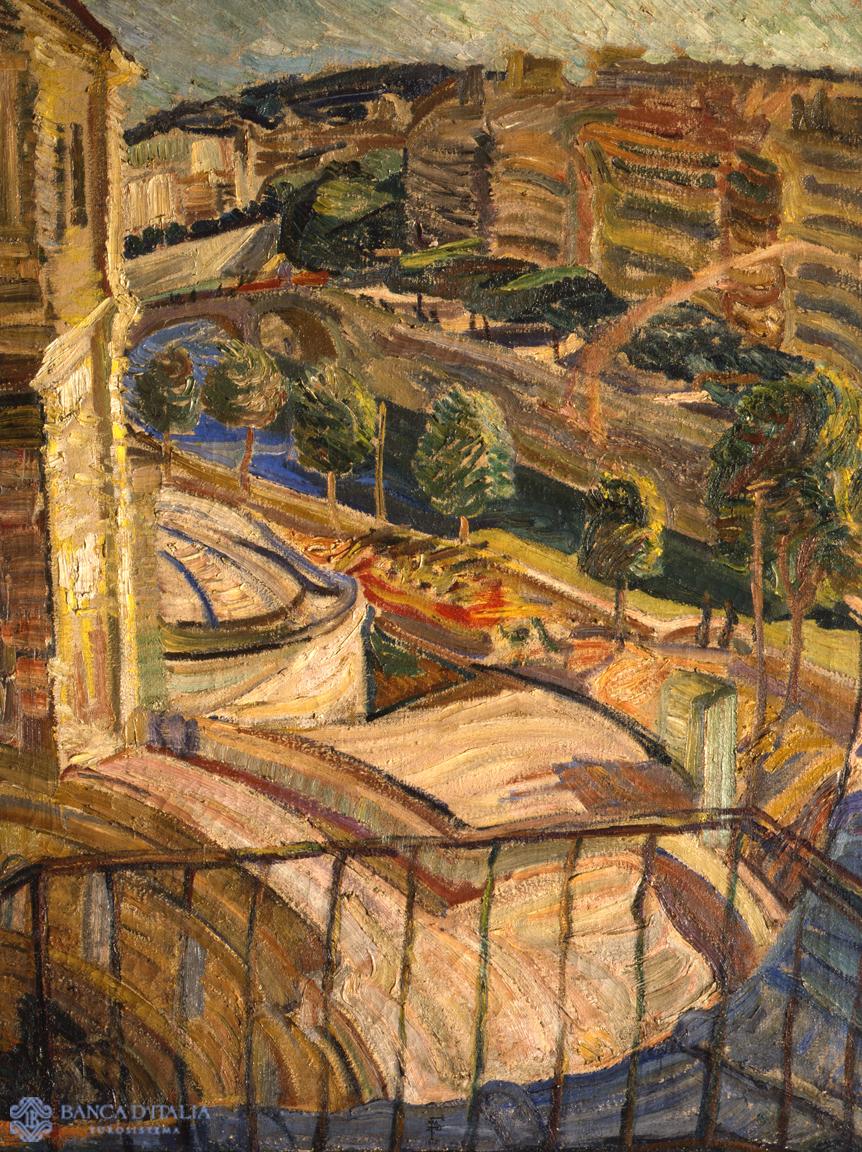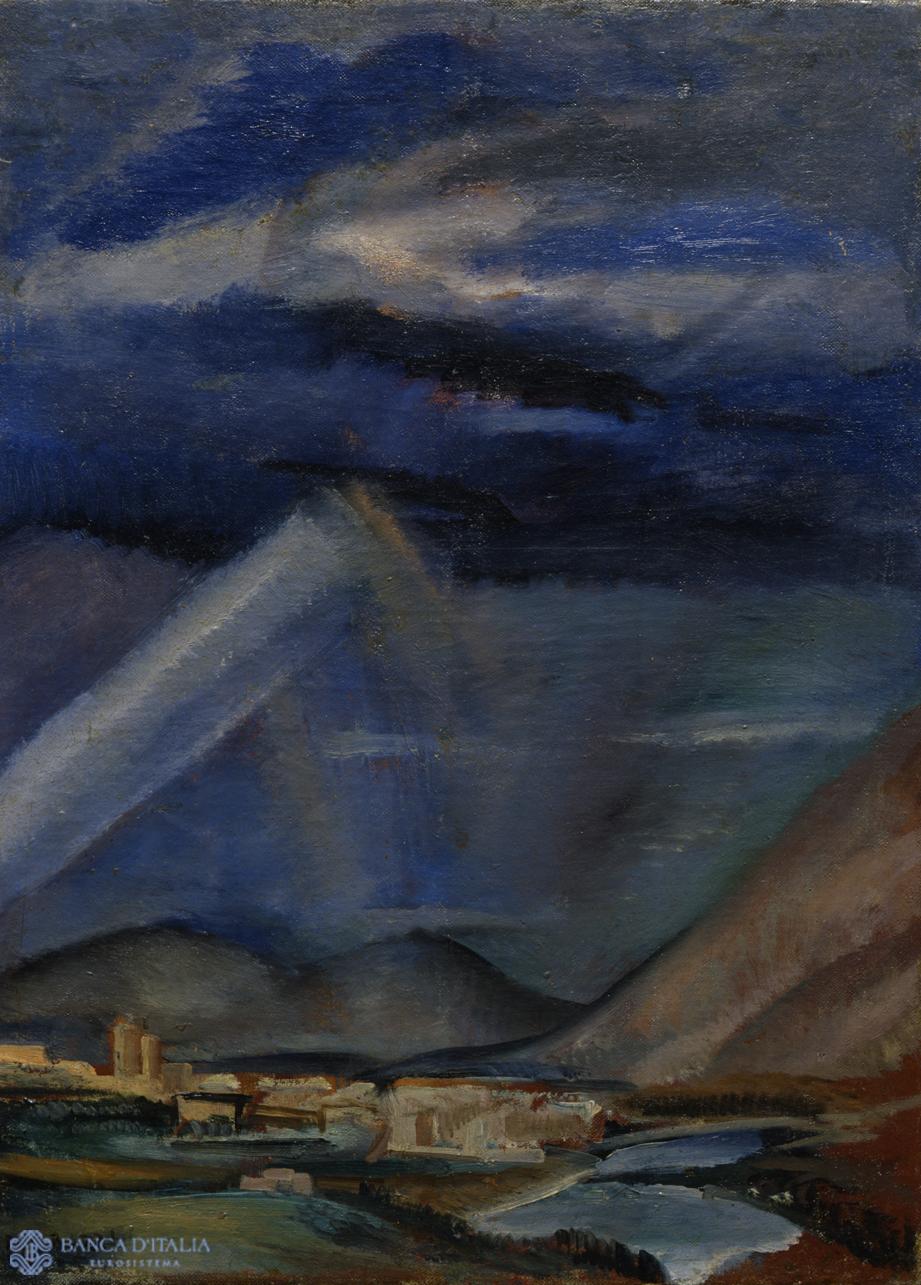Ferruccio Ferrazzi (Rome 1891–1978) had a sensational debut in 1907 when, at the 77th Fine Arts Exposition, the 16-year-old artist showed a self-portrait in which colour was freely laid on with a palette knife. In 1910 he was accepted at the Venice Biennale.
After a period marked by the indirect influence of the Symbolism of Arnold Böcklin, Ferrazzi reached the turning point of his artistic quest in 1912 with a visit to Paris. His interest in the solutions of the relationship between light and colour in Seurat, his fellowship with the Futurists and especially his friendship with Marinetti, and his study of Cézanne led Ferrazzi to engage in a series of diversified experiments all marked by intensely lively expression.
In 1919 Ferrazzi took part in the Great National Futurist Exhibition in Milan. Tireless in seeking new forms of expression, never bound by his previous choices, between 1925 and 1927 he sought inspiration in the work of Piero della Francesca. He subsequently joined the Novecento movement and participated, in the 1930s, in the debate on wall-painting that involved the entire generation of the “return to order”. He continued to experiment throughout his artistic career, and from the 1950s onwards this experimentation also included sculpture.
An artist who has sometimes puzzled critics for the different directions taken in the course of a long career, Ferrazzi is a signal case of an artist who deserves fresh, unprejudiced attention.
Ferruccio Ferrazzi
Ferruccio Ferrazzi (Rome 1891 - Rome 1978)
20th century AD

Compiler
Antonio Del Guercio


